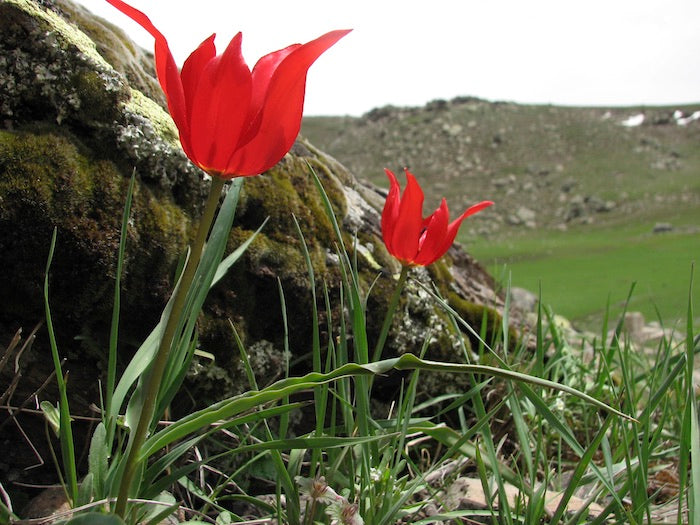
How Do We Get New Tulip Breeds?

This week's #TulipFact: One of the best features of Tulips is their incredible variety - look anywhere for bulbs, and you'll be treated to dozens of unique colors, shapes, and sizes - all beautiful in their right. What you won't see is the work behind every breed: each requiring decades of time and effort before being mature and robust enough to be shared with the world.
Every breed sold today was, at one point, created. Whether by nature or by man, it starts when genetic material from different flowers combine to create a new, unique seed. Today, breeders in Holland and around the world will pick particular flowers to attempt to mix or 'hybridize' in the hope of creating new breeds. Typically, this is done with a particular goal in mind - such as when Geert Hageman used flowers like the Queen of Night, Black Parrot, and Black Beauty in his attempt to create a true 'Black Tulip' (you can read more about the quest for this mythical flower here).
Breeders take the freshly formed seeds, and this is where the long, patient adventure truly begins. In their first year of growth, no flower will appear from the seed. Instead, the plant produces only leaves - capturing the sun's energy and using it to grow and strengthen the bulb below. This process repeats for not one, not two, but for seven years for the typical Tulip. Seven years during which a breeder does not yet know what the final flower even looks like. Complicating this further - color and shape are notoriously difficult to predict, often ending up different from both parents.
During this time, several of the seeds will be discarded or removed. Breeders need to ensure that whatever grows will be robust enough to create on a commercial scale, and if the growing seeds appear too small or frail, or if they fail to generate a significant number of bulb offshoots - an alternative form of Tulip reproduction where-in the bulb generates a genetic clone of itself (more on that below) - they are deemed 'not worth the effort'. Modern planting technology, such as greenhouses and temperature controls, have allowed growers to shave some time off of this multi-year process - but overall it still requires deep patience and years of working and waiting.
And once a new flower emerges, healthy and robust, the work continues! A decision is made on whether the flower will appeal to the Tulip lovers of the world - is it something that, among the countless varieties already sold today, will stand out and be desired? This is not a decision to be taken lightly, and the vast majority of new breeds will be turned down. Why? Because it can take approximately fifteen years of hard work to take a single flower and get it to a point of commercial viability.
The problem sounds relatively simple - we have one flower we like, so now we need more. Seeds are not a viable option, as the genetic mixing that goes into them means that the flowers could easily differ from the original. Plus, seeds require several years to reach viability, so instead the industry focuses on bulb offshoots. As stated above, offshoots are a form of asexual reproduction for Tulips, where the bulb creates a genetic clone of itself that can be taken and re-planted.
As it is genetically identical, the same flower and appearance is more or less guaranteed. But, similar to seeds, bulb offshoots require years to reach flowering maturity (although typically only three to four years). The growers set to work on the viable flower, with all effort focused on generating and planting new bulb offshoots (which will then generate offshoots of their own). It may take fifteen years, but the power of multiplication can turn the single flower into thousands - where one bulb generates 3-4 offshoots each season, which then mature and each generate 3-4 more, which then mature and do the same.
Eventually, with thousands of flower bulbs available, the breed will be ready for sale. Mature bulbs are sold to wholesalers and retailers, who then pass them on to consumers for use in gardens. With each year, bulbs are sorted - those that have reached maturity will be collected and sold, while the others are re-planted to sustain the breed and to be sold in future years :).

